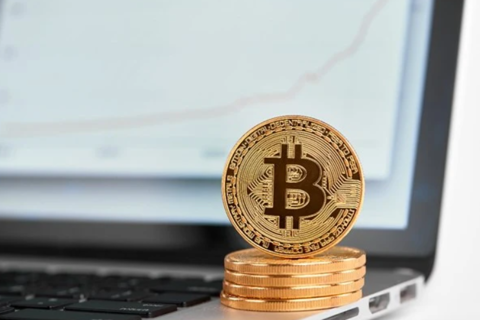Vietnam's 10-year low GDP growth in Q1 is not the worst yet: Think tank
Vietnam’s informal sector, accounting for an estimated 25 – 30% of GDP, is among the groups hardest hit by the pandemic, but not included in GDP calculation.
After Vietnam's GDP growth in the first quarter (Q1) hit a 10-year low, its biggest challenge is yet to come as the economy would only feel the true scale of the damages caused by the Covid-19 pandemic in Q2, according to Pham The Anh, chief economist of the Vietnam Institute for Economic and Policy Research (VEPR).
| VEPR's Chief Economist Pham The Anh at the online workshop. Source: Ngoc Thuy. |
With all key economic sectors suffering a plunge in growth, Vietnam's economy decelerated to a 3.8% growth rate in Q1 of 2020, from 6.8% in the corresponding period in 2019.
“It is, however, worth mentioning that the economy was functioning close to normal in the first half of Q1, without a surge in cases of infection, the application of social distancing order or the chaos of Vietnam’s major economic partners,” Anh said at an online workshop on April 13.
He added that Vietnam’s economy only felt the burn of the pandemic in the beginning of March with a growing number of export orders cancelled, which came as a result of a sharp decline in consumption demand from major export markets such as the US and Europe.
It is even more concerning that the GDP growth rate of 3.82% did not fully reflect the negative impacts of the Covid-19 pandemic on the local economy, Anh stressed.
Unlike previous economic crisis, Vietnam’s informal sector, estimated to make up 25 – 30% of the GDP, is now among the groups hardest hit by the pandemic, Anh said, adding all economic activities in the sector are now suspended under the social distancing order.
The huge losses in jobs and revenue in this sector were not taken into account for GDP calculation as the current statistics number does not cover the informal economic sector, Anh explained.
Manufacturing bracing for all-time low growth
The manufacturing and processing sector was the spotlight of the economy with a growth rate of 7.12% year-on-year during the January – March period, significantly higher than the growth of agro-forestry-fishery sector and services at 0.8% and 3.27%, respectively.
“There is a high possibility that the manufacturing sector is on course for an all-time low growth rate in Q2, mainly due to substantial declines in both new orders and production,” Anh said.
| Economist Pham Sy Thanh. Source: Ngoc Thuy. |
On this issue, economist Pham Sy Thanh suggested Vietnam remains largely an outsourcing economy, which was initially struggling for replacement of China’s input materials since the outbreak of the pandemic and later the lack of orders from major buyers in the US, Europe for its products.
“Even when the Chinese economy is able to restore full production capacity, Vietnamese firms should anticipate an even greater drop in demand as the pandemic is still wreaking havoc in their key export markets,” Thanh said.
Referring to other key sectors of the economy, VEPR’s Chief Economist Anh suggested the inflationary pressure for Vietnam is low this year as a result of low level of private consumption and disposable income.
Despite the current consumer price index (CPI) expanded at 5.56% year-on-year in Q1, it is possible that inflation will stay below the 4% target this year, given the state’s efficient management of food prices, Anh added.
Anh referred to recent estimation of the Ministry of Finance that Vietnam’s fiscal deficit could increase to as high as 5 – 5.1% of GDP, equivalent to the deficit level recorded during the 2008 – 2009 crisis. He noted the ratio could go up to 6.5 – 7% if debt principal repayments are included.
While the State Bank of Vietnam (SBV), the country’s central bank, said outstanding loans affected by the pandemic is nearly VND2,000 trillion (US$85.76 billion), Anh warned this amount if turned into bad debts would reverse all the good job done to improve the health of the banking system over the past years.
Gloomy outlook
“Even when Vietnam could control the pandemic, the economy could only fully recover once the world’s economic activities normalize,” Anh said.
| Data: VEPR. Chart: Ngoc Thuy. |
Among three economic scenarios set up by the VEPR, Anh said with the most optimistic one where the pandemic is contained in mid-May and global economic activities resume to normal by the end of this quarter, Vietnam’s GDP growth would record a contraction of 3.3% in April – June and a growth rate of 4.2% for the full year.
In the worst case with the pandemic persisting to the last half of the fourth quarter, Vietnam’s economy is predicted to contract 1% this year.
Anh added in the short term, public spending could partially offset the negative impacts of the pandemic on Vietnam economy, but the long-term outlook relies entirely on Covid-19 vaccines.
Anh expected the Vietnamese government to provide utmost support to enterprises having least impacts from the pandemic as they are the main driving force for the economy at the moment.
“Economic support must go hand in hand with efforts to combat the Covid-19 pandemic. The government should allow companies to operate in any situation, if they could ensure safety,” Anh concluded.

.png)
.png)
.png)










